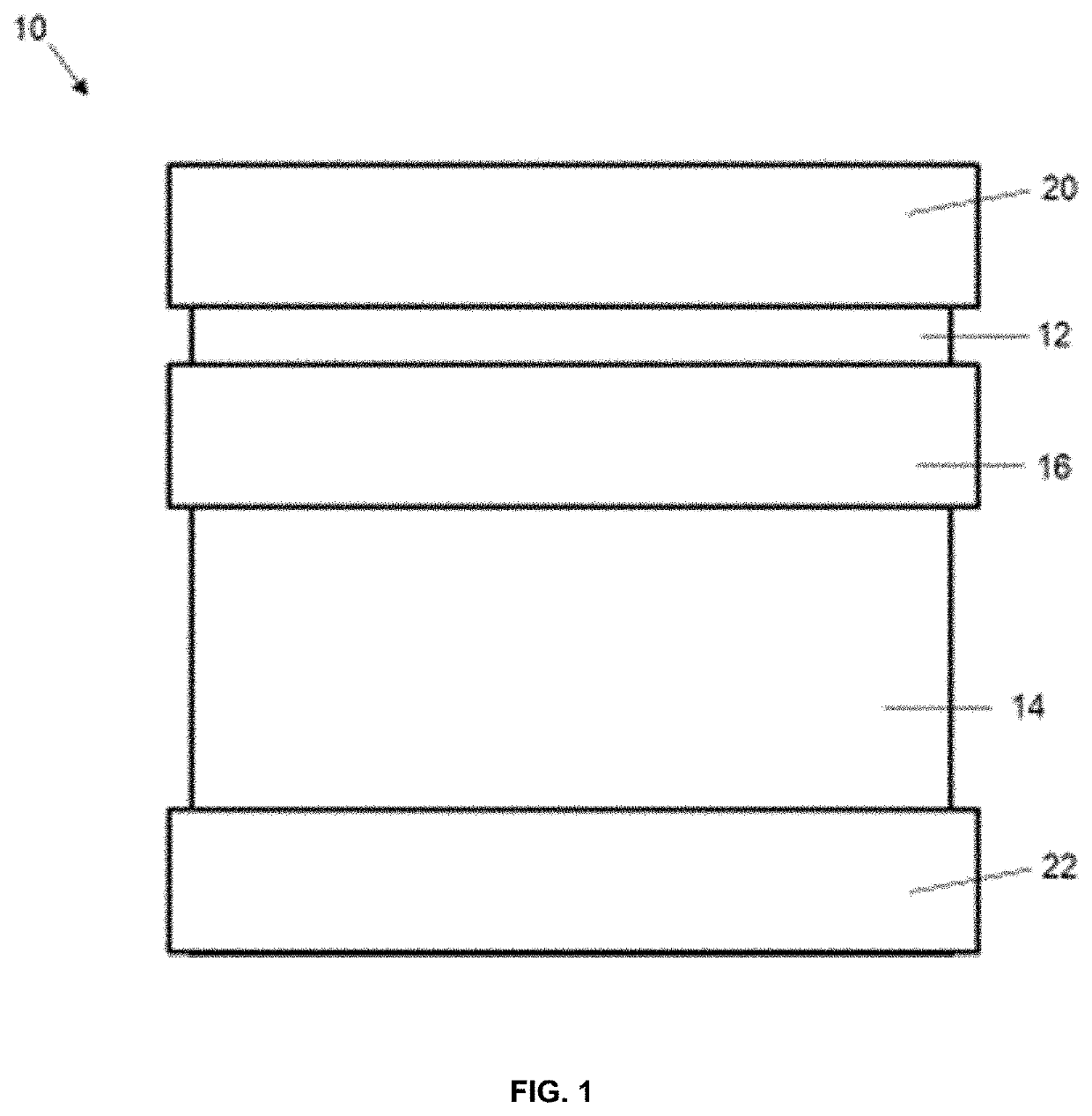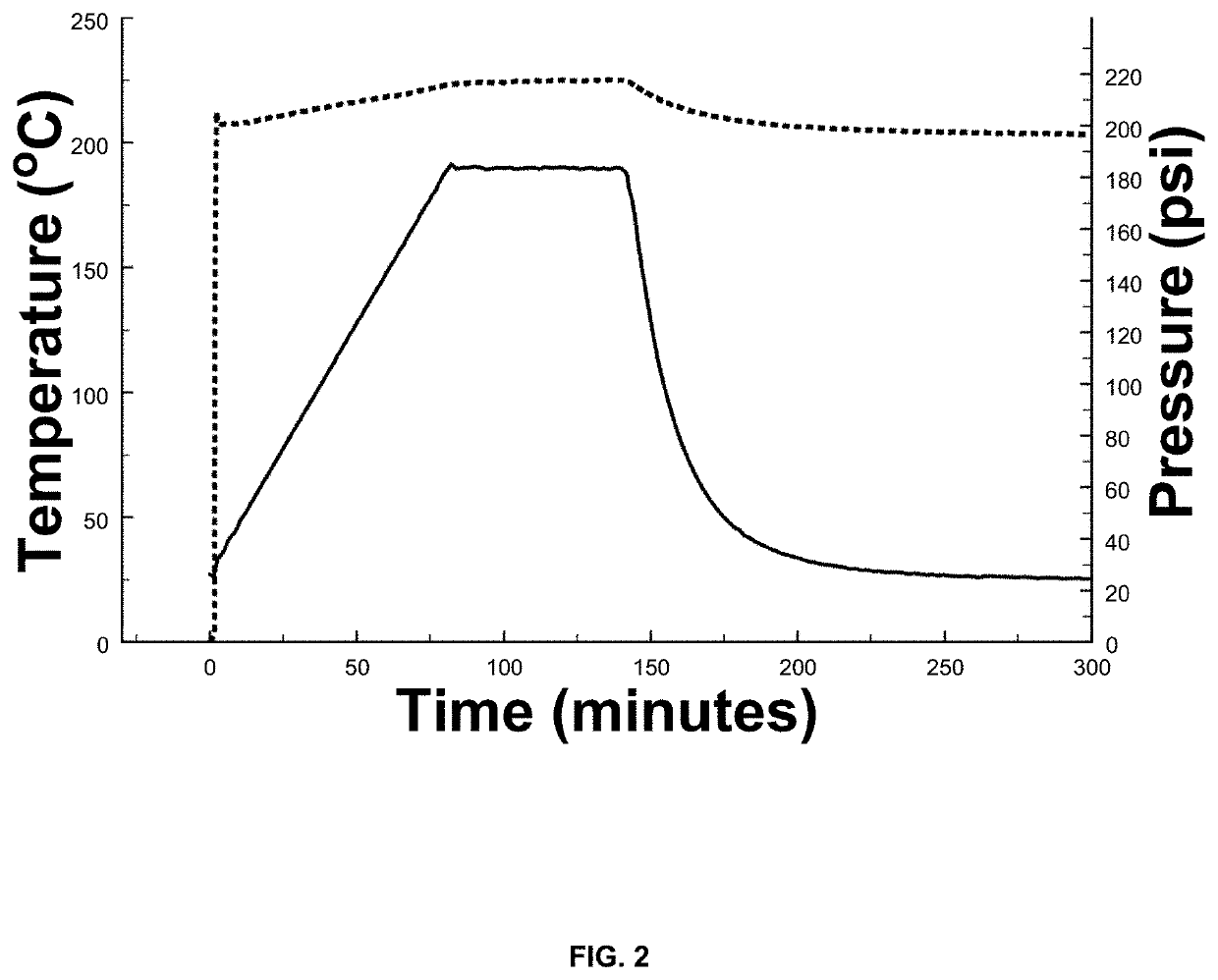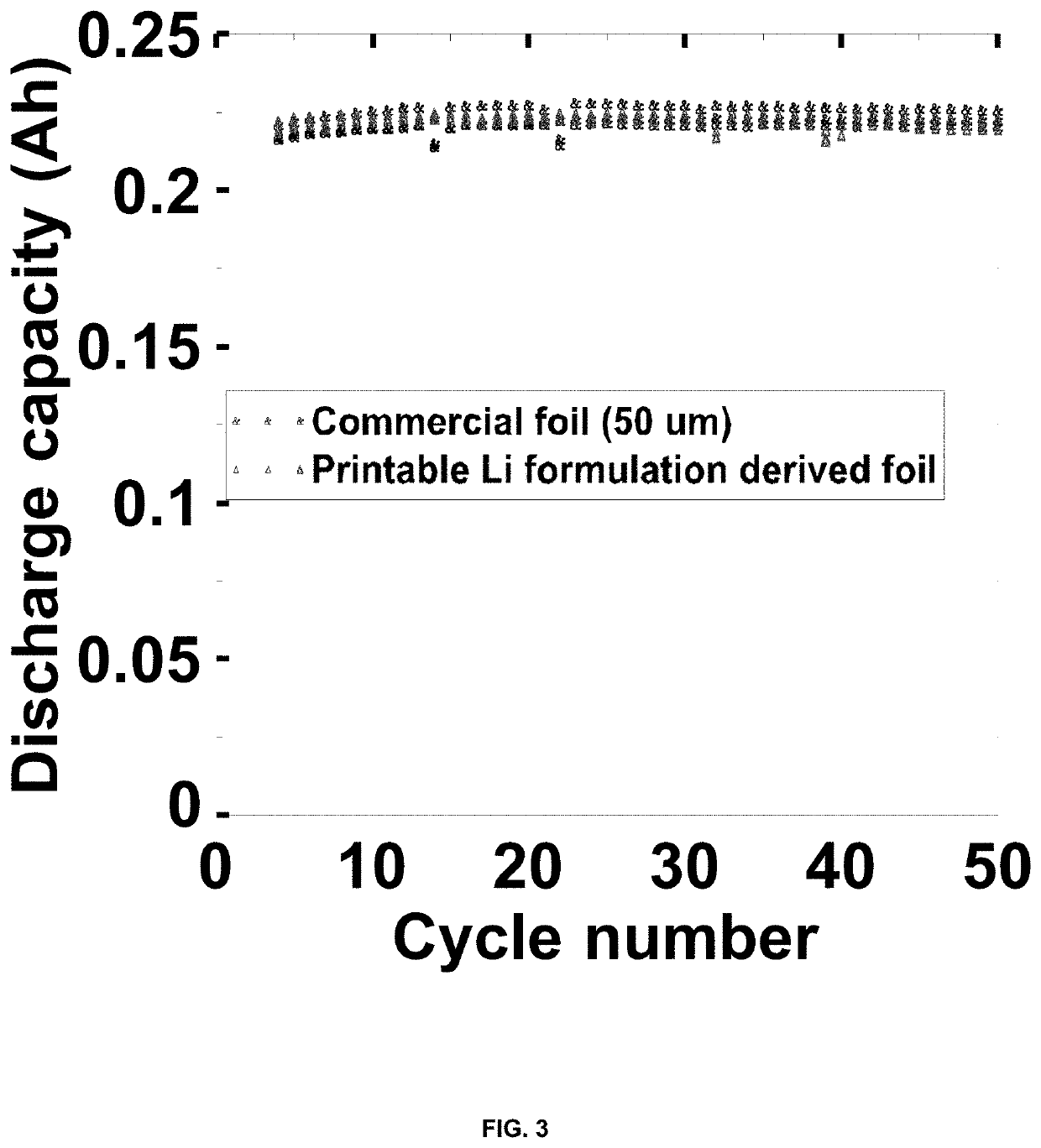Battery utilizing printable lithium
a lithium-ion battery and lithium-ion technology, applied in the field of batteries, can solve the problems of reducing the the smaller capacity of lithium-ion batteries, and achieve the effects of improving safety and manufacturability, and increasing energy density
- Summary
- Abstract
- Description
- Claims
- Application Information
AI Technical Summary
Benefits of technology
Problems solved by technology
Method used
Image
Examples
example 1
[0063]10 g of solution styrene butadiene rubber (S-SBR Europrene Sol R 72613) is dissolved in 90 g toluene (99% anhydrous, Sigma Aldrich) by stirring at 21° C. for 12 hours. 6 g of the 10wt % SBR (polymer binder) in toluene (solvent) is combined with 0.1 g carbon black (Timcal Super P) (rheology modifier) and 16 g of toluene and dispersed in a Thinky ARE 250 planetary mixer for 6 minutes at 2000 rpm. 9.3 g of stabilized lithium metal powder (SLMP®, FMC Lithium Corp.) having polymer coating of 20 to 200 nm and d50 of 20 μm is added to this suspension and dispersed for 3 minutes at 1000 rpm in a Thinky mixer. The printable lithium is then filtered through 180 μm opening stainless steel mesh. The printable lithium suspension is then doctor blade coated on to a copper current collector at a wet thickness of 2 mil (˜50 μm). FIG. 3 is a plot showing the cycle performance for a pouch cell with printable lithium derived thin 20 micron lithium film as the anode vs. commercial 50 micron lithi...
example 2
[0064]10 g of 135,000 molecular weight ethylene propylene diene terpolymer (EPDM) (Dow Nordel IP 4725P) is dissolved in 90 g p-xylene (99% anhydrous, Sigma Aldrich) by stirring at 21° C. for 12 hours. 6 g of the 10wt % EPDM (polymer binder) in p-xylene (solvent) is combined with 0.1 g TiO2 (Evonik Industries) (rheology modifier) and 16 g of toluene and dispersed in a Thinky ARE 250 planetary mixer for 6 minutes at 2000 rpm. 9.3 g of stabilized lithium metal powder (SLMP®, Corp.) having polymer coating of 20 to 200 nm and d50 of 20 μm is added to this suspension and dispersed for 3 minutes at 1000 rpm in a Thinky mixer. The printable lithium is then filtered through 180 μm opening stainless steel mesh. The printable lithium composition is then doctor blade coated on to a copper current collector at a wet thickness of 2 mil (˜50 μm).
example 3
[0065]1.5 g of 1.27M molecular weight of PIB is dissolved in 85 g Toluene by stirring at 21° C. for 12 hours. 1.5 g of carbon nanotube was then added to the solution and continuous stirring for ˜1 h to form a homogeneous suspension. 30 g of stabilized lithium metal powder (SLMP®, FMCLithium Corp.) having a polymer coating of 20 to 200 nm and d50 of 20 μm is added to this suspension and dispersed for 3 minutes at 1000 rpm in a Thinky mixer. The printable lithium suspension is then filtered through 180 μm opening stainless steel mesh. The printable lithium composition is then printed on to a copper current collector at a wet thickness of 2 mil (˜50 μm)and a dry thickness of about 25 μm before lamination.
Shelf Life Stability
[0066]Printable lithium components must be selected to ensure chemical stability for long shelf life at room temperature and stability at elevated temperature for shorter durations such as during transport or during the drying process. The printable lithium composit...
PUM
| Property | Measurement | Unit |
|---|---|---|
| particle size | aaaaa | aaaaa |
| particle size | aaaaa | aaaaa |
| particle size | aaaaa | aaaaa |
Abstract
Description
Claims
Application Information
 Login to View More
Login to View More - R&D
- Intellectual Property
- Life Sciences
- Materials
- Tech Scout
- Unparalleled Data Quality
- Higher Quality Content
- 60% Fewer Hallucinations
Browse by: Latest US Patents, China's latest patents, Technical Efficacy Thesaurus, Application Domain, Technology Topic, Popular Technical Reports.
© 2025 PatSnap. All rights reserved.Legal|Privacy policy|Modern Slavery Act Transparency Statement|Sitemap|About US| Contact US: help@patsnap.com



